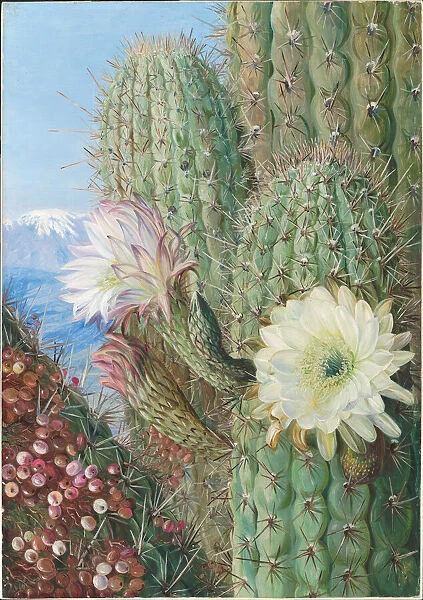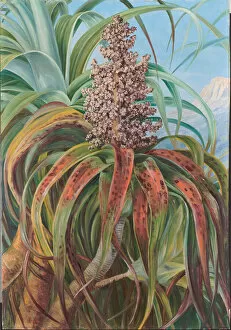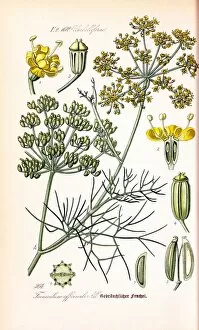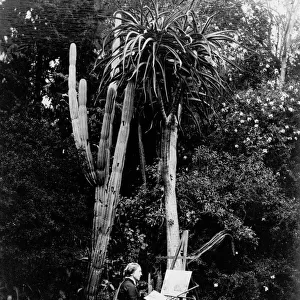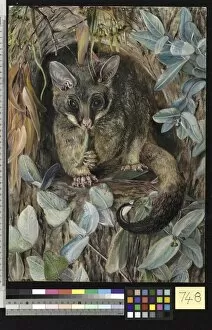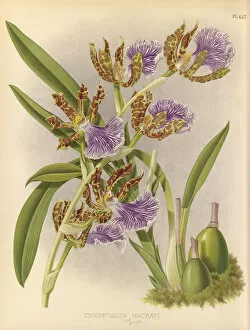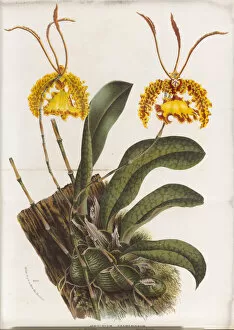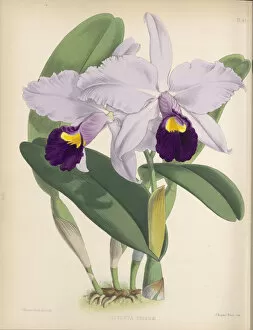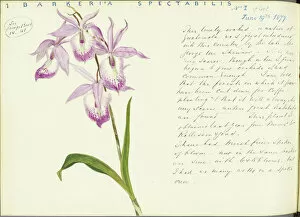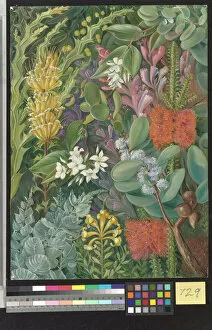Rights Managed > Botanical Art > Cacti and Succulents
23. A Chilian Cactus in flower and its Leafless Parasite in fruit
Purchase This Item For Download
world rights, single editions, non exclusive use
Filename: MN_023-MN090422_023.jpg
Size: 5169 x 7333 (46.1MB)
Date: 20th February 2018
Credit: © The Board of Trustees of the Royal Botanic Gardens, Kew
© The Board of Trustees of the Royal Botanic Gardens, Kew
![]()
Wall Art and Photo Gifts from Kew Images
23. A Chilian Cactus in flower and its Leafless Parasite in fruit
Referring to the various Chilian landscapes, we see that columnar cacti are a conspicuous feature. This, the-commonest species, is Cereus Quisco, Gay, which grows to a height of 1.5 to 20 feet, and is often preyed upon by a leaf less parasite, Loranthus aphyllus, Miers (syn. L. cactorurn, Hook. et Arm). In this case both nurse-plant and parasite-are leafless; in others it may be seen that the leaves of the two are often similar (see 21 and 734). In 26 the cactus and its parasite are shown in their natural habitat. The ripe white berries of the Loranthus are edible
Media ID 20530088
© The Board of Trustees of the Royal Botanic Gardens, Kew
Artist Berries Cactus Green Landscape Leaves Marianne North Painting White
FEATURES IN THESE COLLECTIONS
> Botanical Art
> Cacti and Succulents
> Botanical Art
> Marianne North
MADE IN THE USA
Safe Shipping with 30 Day Money Back Guarantee
FREE PERSONALISATION*
We are proud to offer a range of customisation features including Personalised Captions, Color Filters and Picture Zoom Tools
SECURE PAYMENTS
We happily accept a wide range of payment options so you can pay for the things you need in the way that is most convenient for you
* Options may vary by product and licensing agreement. Zoomed Pictures can be adjusted in the Cart.

